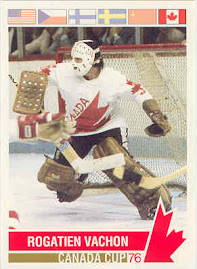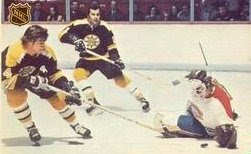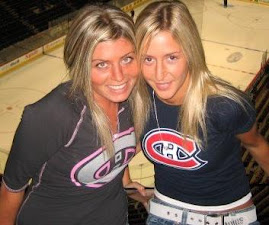
Starting the fifth NHA season, league trustees continued to refine the rules governing the game. Changes included referees now dropping the puck for faceoffs instead of placing it on the ice, placing a dark line between the goal posts along the ice, and the recording of assists.
Goalkeeper sticks would now be limited in width to 3 1/2 inches, and goalkeepers lying down to stop a puck would receive a minor penalty and $2 fine. All minor penalties were set at $2 fine and major fouls would cost more per incident, starting a $3 and 5 minutes off, to $5 and 10 minutes off, to $10 and a match penalty. Deliberate injury was a $15 fine and banishment until the injured player returned to play.
The league achieved a certain amount of stability, with all six teams from the previous season returning. The only minor change was a name switch - the Tecumsehs would now be known as the Toronto Ontarios.
Bigger changes overall would come at the term of the 1913-14 season, for both the NHA and PCHL. Prior to the start of the next NHA season, league officials worked out an agreement on territorial rights for players with the Pacific Coast Hockey Association. As players were using the two leagues as leverage for salary increases, the owners were being hit in the pocketbook and the agreement was seen as a move towards stability for all franchises. Much to the detriment of the players, they would be suspended by both leagues if they failed to report in the eventuality of a trade from one league to another.
In a September of 1914 meeting in Montreal, it was decided that Port Arthur, Ontario, now known as Thunder Bay, would be the dividing line separating each league's territory. There was one stipulation made that each league could recruit 3 players from the other's protected area.
The leagues also conferred on a decision that marked the end of the Stanley Cup as a challenge cup. The trustees for both leagues negotiated an agreement to have the champions of the NHA and the PCHA meet each year to determine a champion, beginning in with the 1914 -15 season.
The final would be a best of five affair. The ruling was brought upon by controvery following the 1914 final between the Toronto Blueshirts and the Victoria Aristocrats after it was discovered that the PCHA champions had never formally applied to challenge for the cup.
 The new season saw the unveiling of the first Canadiens sweater to resemble to modern day look presently sported. The mostly red sweater had a larger blue bar across the torso, on which the "CA" logo was positioned. The blue bar was outlined in white and the logo had gone from a stylized old english lettering to a more refined oval shape. There were no colour bars on the arms as of yet, and the bottom of the sweater was ourline with a simple small white bar.
The new season saw the unveiling of the first Canadiens sweater to resemble to modern day look presently sported. The mostly red sweater had a larger blue bar across the torso, on which the "CA" logo was positioned. The blue bar was outlined in white and the logo had gone from a stylized old english lettering to a more refined oval shape. There were no colour bars on the arms as of yet, and the bottom of the sweater was ourline with a simple small white bar.Just as many hockey fans would later be curious about the origin of the letter "H" in the logo, many fans looking back on the team's look in 1913 have wondered about the origin of the letter "A" in this seasons version. The "A" had actually been a part of the logo design since the team had become owned by Le Club Athlétique Canadien since the 1910-11 season, and it remained so until the purchase of the team by Le Club de Hockey Canadiens in a matter of years. Still, legions of fans believe the "H" stands for Habs, a term that was not used in reference to them until the mid 1920's, close to 10 seasons after the "H" had been incorporated into the logo.

The 1913-14 season would be an interesting one for the Montreal Canadiens, and this time around adversity would not be their downfall.
Many players on the 1912-13 rosters were to return, but Canadiens management sought to shake up the team's compostion and did the unthinkable by trading Newsy Lalonde to the Vancouver Millionaires.
Of course, Newsy wouldn't have any of that, and he refused to report to the PCHA team.
The deal was Lalonde to the Millionaires for former Wanderers star Jimmy Gardner and five hundred dollars. Gardner was all too willing to return to his home turf, and upon Lalonde's refusal, the Canadiens offered Donald Smith instead.
Vancouver was not interested.
Finally, after Newsy wrote a letter to the Patrick brothers, owners of the Vancouver franchise, promising to head out west the following season, a deal was worked out that satisfied all parties for the time being. The Millionaires would aquire Didier Pitre for one season, returning him to Montreal in 1914-15, conditional upon Lalonde's promised arrival the following season.
Lalonde and Pitre were both content that they would not have to put up with each other for the season.
The always combustible Lalonde would celebrate that moral victory with a continuation of his personal war on hated rival Joe Hall of the Quebec Bulldogs.

In the second game of the season on December 30, as Quebec inaugurated a new arena, Lalonde sought vengeance for last season's battles and wacked Hall in the head, opening an eight stitch cut. He was tossed from the game and fined. Two weeks later on January 14, Hall got even, charging Lalonde violently from behind. Newsy crashed head first into the boards, requiring ten stiches. With Hall up ten stiches to eight, this war was far from over.
The Canadiens lineup for the season returned 10 players from the previous year. Other than Lalonde, Montreal brought back mainstays Vezina, Laviolette, Smith, Dubeau, Berlinguette and Dallaire, with Eugene Payan, Alphonese Jetté and Clayton Fréchette suiting up again as spares. Only Pitre and spares Fred Povey and Hyacinthe Guevremont would not return.
New to the team were Harry Scott, Emile Marchildon and Lorenzo Bretrand, who had subbed with the Canadiens during the 1910-11 season.
The biggest addition would be that of Gardner, who was named the team's captain and coach. Gardiner had previously coached the Wanderers for two seasons.
The Canadiens began their season on the road December 27th, losing to a strong Toronto Blueshirts squad by a 3-0 shutout. Three nights later they were in Quebec, and they defeated the Stanley Cup champions 4-3, in a game highlighted by the ongoing Lalonde and Hall feud and inherant shenanigans.
January was very good to Montreal as they would rack up six wins. After edging the renamed Ontarios 4-3 in Montreal on the third of the month, they travelled to Ottawa four nights later and were shut out the Senators by a commanding 6-0 score.

Montreal bounced back and unloaded their artiliary on the Wanderers January 10th, pounding them 8-2 in front of a hometown crowd. Lalonde scored six goals in the single handed dismantling. Four days later, a rematch with the Bulldogs ended in the same 4-3 score in Montreal, that included Round 4 of the Lalonde and Hall tilt.
The Canadiens kept their winning ways up when they ventured to Toronto and drubbed the Ontarios with a 9-3 shellacking on the 17th.
Four nights later, a resilient Senators squad bounced the Canadiens 4-3. Undeterred, Montreal steamrolled the Wanderers before their fans on the 24th, walloping them 9-3. On the 28th they won again, this time revenging the opening night loss to the Blueshirts by a 4-3 margin. They returned home on the final day of the month, losing the contest 6-4 to a weak Ontarios team.
On February 4, it was back up to Quebec city, where a 6-1 clubbing by the Bulldogs grounded the team. The Canadiens then asserted their claim for the NHA elite with a 9-3 manhandling of the Blueshirts on the 7th in Montreal. A return date with the Wanderers on February 11 offered another high scoring rout, this time by a 6-2 score.
On home ice on the 14th, against an improving Senators club, the Canadiens needed six minutes and fourty seconds of overtime to solve Ottawa goalie Clint Benedict for a 1-0 win. The win was a costly one for the Canadiens, who lost Newsy Lalonde for the remainder of the season after he was slashed in the ankle by the Senators Eddie Gerard. In his fall, Lalonde fell heavily to the ice, fracturing his clavicle, Gardner was also gone for the year from a knee injury sustained in this rough contest. In all five Canadiens left the game on stretchers.
The hurting Canadiens were at home against the Bulldogs four nights later, and with many spares in starting roles, edged Quebec by a 2-1 score.
 The Canadiens were on the verge of a team record fifth straight win when they headed to Toronto on the 21st, trying to make it three wins in a row against the Blueshirts. A 3-2 setback dropped them from grabbing the season series with the Blueshirts and they moved onto Ottawa four days later for another one goal loss to the Senators, a 6-5 overtime game that required an additional 30 minutes to settle.
The Canadiens were on the verge of a team record fifth straight win when they headed to Toronto on the 21st, trying to make it three wins in a row against the Blueshirts. A 3-2 setback dropped them from grabbing the season series with the Blueshirts and they moved onto Ottawa four days later for another one goal loss to the Senators, a 6-5 overtime game that required an additional 30 minutes to settle.February 28 saw the Canadiens sweep the season series against the Wanderers for the first time, with a 6-5 win on home ice. Along the course of the 20 game season, the Canadiens had often complained of the treatment reserved for them by english officials. Oddly, it was a francophone referee would got under the ire of Canadiens owner George Kennedy in a game on February 28. Heading down to ice level, the Canadiens owner grabbed official Leo Dandurand by the throat, and insulted him publicly as per the letter sent to the NHA president by the official. The league took no action following the complaint.
With the Blueshirts loss to the Quebec on the same night, Toronto and the Canadiens were tied for first place with the Bulldogs four points behind. A Montreal win combined with a Blueshirts loss to the Wanderers on the season's final night of March 4 would give the Canadiens the NHL title.
It was not to be, as both teams lost their chance to gain the upper hand. The Blueshirts dropped their Wanderers matchup by a 7-5 score while the Canadiens found a way to lose to the last place Ontarios by a 5-3 mark.
 The final regular season standings looked like this:
The final regular season standings looked like this:Toronto Blueshirts 20 13 7 26 93 65
Montreal Canadiens 20 13 7 26 85 65
Quebec Bulldogs 20 12 8 24 111 73
Ottawa Senators 20 11 9 22 65 71
Montreal Wanderers 20 7 13 14 102 125
Toronto Ontarios 20 4 16 8 61 118
A two game total goals showdown would be needed to declare a league champion. The Canadiens got off to a strong start, shutting out the Blueshirts 2-0 in the first game before hometown fans on March 7. Three nights later, the Blueshirts tightened up their league leading defense and shut the Canadiens down to take the game 6-0 and the total goals series 6-2. Without Lalonde and Gardner in the lineup, the Canadiens were no match for the Blueshirts - a disappointing ending to what the was far and away the Canadiens best season.
In the final season of the challenge Cup era, the Blueshirts defeated the Victoria Aristocrats in three straight games to give the city of Toronto its first Stanley Cup championship.



































































































































































No comments:
Post a Comment